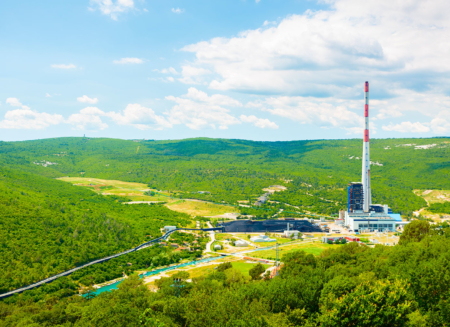Sanborn Head provided technical litigation support to a potentially responsible party regarding the Passaic River Superfund site.
Key Components:
- Contaminant Fate & Transport Analysis
- Expert Witness Services
- Forensic Analysis of Contaminants
Sanborn Head assisted a potentially responsible party (PRP) with litigation regarding the Passaic River (aka Diamond Alkali Company) Superfund site. Diamond Alkali and predecessor firms manufactured DDT, and herbicides used in Agent Orange, at their facility at 80 Lister Avenue on the Passaic River in Newark, NJ. Discharges from this facility are thought to be the major source of contamination driving the need for cleanup along the 17-mile tidal stretch of the River, as well as portions of Newark Bay. Primary contaminants in the River sediments include dioxins/furans, pesticides, polychlorinated biphenyls (PCBs), metals (primarily lead), and polycyclic aromatic hydrocarbons (PAHs). The Site Record of Decision calls for bank-to-bank dredging of sediments over eight miles of the Passaic River (dredging and off-site disposal of 3.5 million cubic yards of sediment) and subsequent capping, with an estimated cost of over $1 billion dollars with approximately 100 PRPs identified. Remedial design is ongoing, with expected completion by end of 2023. The subsequent cleanup (sediment dredging and capping) is expected to take 6 to 8 years.
Our technical support included evaluation of potential contaminant sources and transport pathways at our client’s active, waterfront manufacturing facility, where the primary contaminant potentially linking them to the impacted River sediments was PCBs. Their potential contributions of dioxins/furans, lead and PAHs were also assessed. We completed a broad review of available sediment data, and critically reviewed the risk assessment for the 8-mile River stretch targeted for dredging and capping. File reviews were performed for other key PRPs along the River to assess the potential contributions of these other properties to the contaminants driving the need for remediation of sediments. In addition to assessing the types of operations and chemicals/contaminants used by various other PRPs, we also looked at the location of higher levels of these contaminants in sediments relative to the various PRP properties, and the timing of the chemical usage compared with the apparent age of contaminated sediments. We also evaluated the potential mass of various contaminants that could be sourced by different PRPs compared to the mass of these contaminants in the sediments, and assessed whether sufficient contaminant mass may have been generated to significantly impact the sediments.



